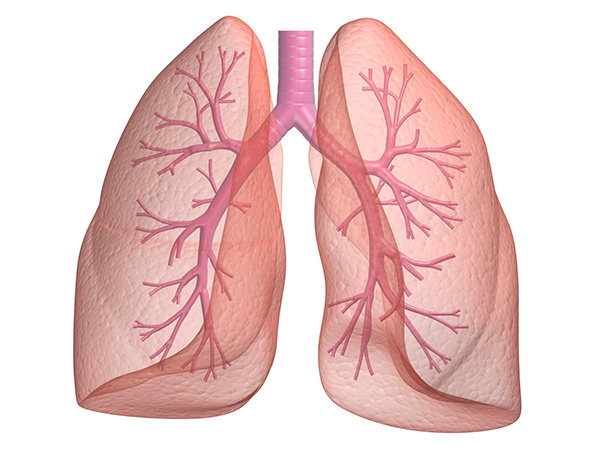Air is a mixture of gas from which the body uses the oxygen. Respiratory system includes upper airways (nose, pharynx, larynx) and lower (trachea, bronchi, their ramifications and alveoli). The nose is, however, an organ that most people do not know much about. However it is extremely important in the act of breathing because the air inside it is heated and humidified. So his ability is amazing: it can heat the air in the nostrils to the tonsils up to 30 degrees Celsius. At this level, filtering of dust particles and retention of microbes takes place in the mucosa.
A gift from heaven: Oxygen
With every breath, we bring into the lungs 10,000 to 5 billion microscopic particles that during the life of a man totals up to 50 pounds. With particular conditions of work and life, these quantities can be multiplied ten times. Most of the time they are retained in the mucus covering the respiratory mucosa. So respiratory mucosa is provided with cilia, some tiny filiform formations, which create wave moves from inside to outside.
Thus, it can remove foreign inhaled particles. The total mass eliminated daily is over 300 grams.
This is the origin of productive cough for more serious respiratory problems, and also the early morning sputum for smokers. It is a defensive reaction of the organism. Heavy smokers have a morning cough that comes from the same test organism to eliminate some toxic deposits that are deposited at night. They know that if you light a cigarette, it removes cough discomfort. The explanation lies in cilia paralysis by tobacco smoke and the price to create a breach in the defenses of the respiratory system. Therefore, colds and flu can easily be contacted, and the disease is more severe and lasting longer. Those who quit smoking may cough for weeks or months until the body do some cleaning.
In the lungs can be found about three liters of air, a normal inspiration adds another 0.5l. So, only 1/6 of the air in the lungs is received while breathing normally, when the air vents 68 liters per minute, respectively 20 cubic meters per 24 hours.
A brisk walk doubles this volume, and a running man vents about 50 liters.
Alveoli epithelium, specifically designed for the exchange of gases, absorbs 5% of the oxygen contained in the air. From one liter it means about 0.07 grams. A brisk walk for 30 minutes will add about 17 grams of oxygen. On the market, we can find oxygen enriched water solutions, promising rich cellular oxygenation by oral administration. The statement is not so true, because the digestive mucosa is not built for the transfer of gas, so it’s not ready to absorb oxygen. At the same time, the molecular oxygen can not dissolve in water. Correct breathing and fresh air are what ensures proper oxygenation throughout the whole body.
Enemies of the respiratory system:
Causes of respiratory disease are many and varied. One of them is the infection from the inhaled air – it has bacteria that usually do not cause disease unless predisposing factors are added. Other microbes can be directly inhaled pathogens, even without overlapping contributing factors: those causing a whooping cough, measles, chicken pox, scarlet fever, tuberculosis, smallpox, diphtheria. In epidemics, virulence of germs is much higher. As such, the contagion is made easier by ordinary air contamination, speech, coughing, sneezing, kissing.
The most common causes are cold air and moisture. The French old school of medicine recognized that “humans cools down through body and not by breathing.” In fact, the blood from the entire body is cooled down, slows oxygen intake and immune factors, cilia become slow, the general and local immunity system strength decreases, and nasal mucosa can not warm the inhaled air. So a practical advice to everyone is to avoid cold in the cold season – first for legs, where the blood is cooled very easy. Do not use clothes that leave the waist unveiled or less dressed; the head, neck and chest uncovered; or miniskirts, because the effects of sexy outfit in the winter can be severe and with long-term consequences. Riding bikes, scooter or motorcycles, is better to be reserved for summer.
Another factor is the excessive consumption of foods that produce more mucus, such as cheese, yogurt, meat, sweets, refined pasta, especially at dinner or late hours before bedtime. Of course, there are people who have individual sensitivity for the respiratory system.
Avoid air fresheners!
A brief overview of the weirdest and “harmless” to the most “killers” would look like this: denatured alcohol, diethylene glycol monoethyl ether (anti-freeze additive), trimethyl pentenyl diisobutyrate (plasticizer for the polish nails), butylated hydroxytoluene – asthma trigger – methyl pyrrolidone, ranked in Europe as toxic for reproduction. However, low and heavy pieces of this chemical arsenal are present in almost all personal hygiene products: dichloro propanol, mutagen, clastogen (loosen chromosomes chains), ethyl hexanol – with obstructive and inflammatory effects for airways – is considered responsible for a disease called “sick building syndrome” (nasal and throat discomfort, breathing difficulty, conjunctivitis, skin irritation and allergies, headaches, fatigue and chronic dizziness), acetaldehyde – respiratory obstruction, is associated with risk for digestive cancer, benzyl acetate – respiratory irritation, is toxic for pancreas. Even very small proportion of only 50 parts per million, can produce kidney damage. At a dosage of 180 ppm, tested cats have died. It is responsible for pancreatic cancer, dichlorohydrin – the well known hepatotoxic, genotoxic and carcinogenic.
How come that a simple spray to get public with all these chemicals? Simple: the by using “ingredients quality control” and “perfumes”. What can you do? Avoid any fresheners! They do not eliminate odors but adds stronger odors, as in camouflage. Do you want natural solutions? Volatile oils (essential) evaporated with various devices for fragrance, disinfectant and refreshing, and for removing odors – charcoal absorbent, plants and proper ventilation.


